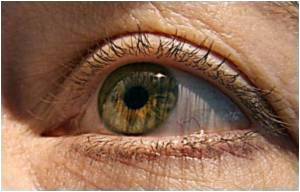Two areas of the brain that compare the movement of the eye with the visual movements have been discovered by scientists.

Area V3A shows a high degree of integration: it reacts to movements around us regardless of whether or not we follow the moving object with our eyes. But the area does not react to visual movements on the retina when eye movements produce them.
Area V6 has similar characteristics. In addition, it can perform these functions when we are moving forwards. The calculations the brain has to perform are more complicated in this case: the three-dimensional, expanding forward movement is superimposed onto the two-dimensional lateral movements that are caused by eye movements.
The scientists Elvira Fischer and Andreas Bartels from the Werner Reichardt Centre for Integrative Neuroscience and the Max Planck Institute for Biological Cybernetics have investigated these areas with the help of functional magnetic resonance imaging (fMRI). fMRI is a procedure that can measure brain activity based on local changes in blood flow and oxygen consumption.
Participants in the study were shown various visual scenarios whilst undergoing fMRI scanning. For example, they had to follow a small dot with their eyes while it moved across a screen from one side to the other. The patterned background was either stationary or moved at varying speeds, sometimes slower, faster or at the same speed as the dot.
Sometimes the dot was stationary while only the background moved. In a total of six experiments the scientists measured brain activity in more than a dozen different scenarios.
Advertisement
"I am especially fascinated by V3A because it reacts so strongly and selectively to movements in our surroundings. It sounds trivial, but it is an astonishing capability of the brain", explained Andreas Bartels, project leader of the study.
Advertisement
Indeed, patients who have lost this ability to integrate movements in their surroundings with their eye movements can no longer recognize what it is that ultimately is moving: the surroundings or themselves. Every time they move their eyes these patients feel dizzy.
Studies such as this bring us one step closer to an understanding of the causes of such illnesses.
Source-ANI













